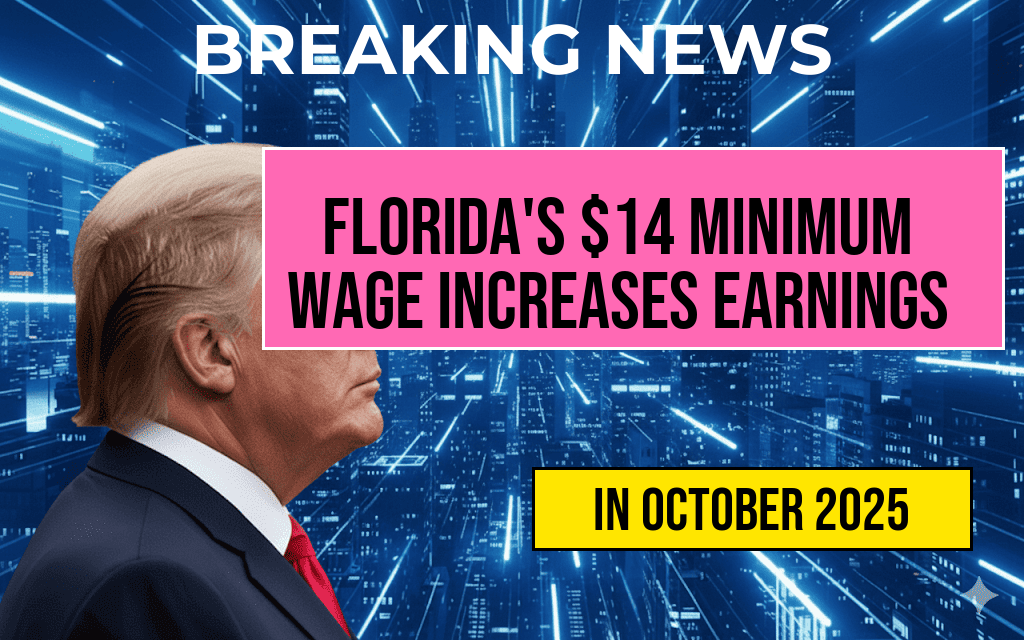Florida’s recent increase to a $14 an hour minimum wage marks a significant shift in the state’s labor landscape, promising tangible earnings boosts for thousands of full-time workers. Effective January 1, 2024, the adjustment aims to support low-wage earners amid rising living costs, with preliminary estimates indicating an average annual income increase of approximately $2,080 for full-time employees earning the minimum wage. This change underscores Florida’s ongoing commitment to elevating economic stability for its workforce, aligning with broader national discussions on living wages and income equity. As the state transitions to this new standard, employers, workers, and policymakers alike are closely monitoring the impacts on employment patterns, consumer spending, and overall economic health.
Impact of the Wage Increase on Full-Time Workers
Enhanced Earnings Potential
For full-time employees working a standard 40-hour week, the jump from the previous minimum wage to $14 per hour translates into a significant boost in annual income. Based on 52 workweeks per year, the increase amounts to an additional $2,080 annually—an important uplift for workers living paycheck to paycheck. This adjustment is part of Florida’s phased approach to reaching a $15 minimum wage by 2026, with the current change serving as a critical step in that direction.
Economic Implications for Workers
- Increased disposable income: More earnings can lead to higher spending on essentials, housing, and healthcare.
- Reduced financial stress: Improved wages may decrease reliance on public assistance programs, providing economic relief for many families.
- Potential for increased workforce participation: Higher wages could attract more individuals into full-time employment or motivate existing workers to extend their hours.
Broader Economic Context
State Policy and Wage Trends
Florida’s decision to raise its minimum wage aligns with a national trend of states implementing higher wage floors. Unlike the federal minimum wage, which has remained at $7.25 since 2009, numerous states and municipalities have adopted higher standards to address inflation and cost-of-living increases. Florida’s move is part of a broader strategy to balance economic growth with social equity, especially in a state where tourism, healthcare, and service industries dominate employment sectors.
Comparison with National Averages
| State | Minimum Wage | Effective Date |
|---|---|---|
| Florida | $14.00 | January 1, 2024 |
| California | $15.50 | January 1, 2024 |
| New York | $15.00 | December 31, 2023 |
| Texas | $7.25 (federal minimum) | N/A |
Potential Challenges and Criticisms
Impact on Employers and Small Businesses
While workers stand to benefit from higher wages, some business owners express concern about increased labor costs, especially in sectors with thin profit margins. Small businesses, in particular, may face challenges in absorbing these costs without passing them on to consumers or reducing staff hours. Industry associations warn that such wage hikes could lead to higher prices in local markets or labor shortages if employers are unable to meet new wage standards.
Labor Market Dynamics
Labor economists caution that rapid wage increases could influence employment levels, with some predicting a potential slowdown in hiring or shifts toward automation to offset higher wages. However, evidence from other states suggests that modest wage hikes often stimulate consumer spending without significantly harming employment rates.
Community and Worker Perspectives
Many workers have welcomed the increase, viewing it as overdue recognition of their contributions in essential sectors like retail, hospitality, and healthcare. Worker advocacy groups have emphasized that a living wage is critical to reducing economic disparities and fostering a more equitable society. Conversely, some business owners remain cautious, advocating for phased implementations and support measures to ease the transition.
Expert Opinions
Economists and labor experts point to the importance of monitoring the wage increase’s real-world effects over the coming months. A balanced approach, they say, can help ensure that wage growth translates into genuine economic benefits without unintended employment disruptions.
Looking Ahead
Florida’s move to a $14 minimum wage sets a precedent in the Southeast, prompting discussions on further wage adjustments and economic policies aimed at supporting low-income workers. As the state observes the initial impacts, policymakers and stakeholders will evaluate the need for additional measures to sustain economic growth and promote wage equity.
For more insights into minimum wage policies and their economic effects, visit Wikipedia’s page on minimum wage and Forbes’ coverage on wage trends.
Frequently Asked Questions
What is the new minimum wage in Florida?
The minimum wage in Florida has increased to $14 an hour, effective immediately, providing better pay for workers across the state.
How does the wage increase impact full-time workers’ annual earnings?
With the $14 per hour minimum wage, full-time workers can see an increase of approximately $2,080 in their annual earnings.
When did Florida implement the new minimum wage?
The new minimum wage was implemented as part of recent legislation, taking effect in the current year to support low-wage workers.
Who benefits from the increase in Florida’s minimum wage?
The workers earning minimum wage across various sectors in Florida will directly benefit from the increase, gaining higher income stability and purchasing power.
Are there any future plans for minimum wage adjustments in Florida?
Yes, Florida has plans for periodic reviews and potential future increases to the minimum wage to keep pace with inflation and economic growth.






